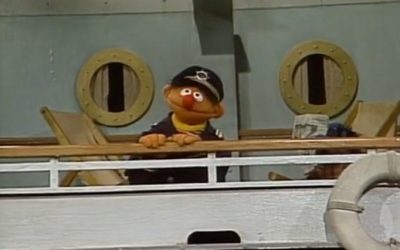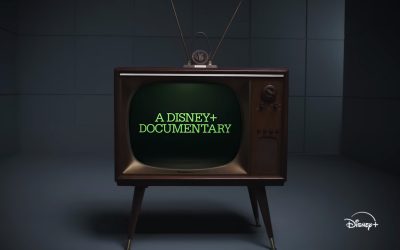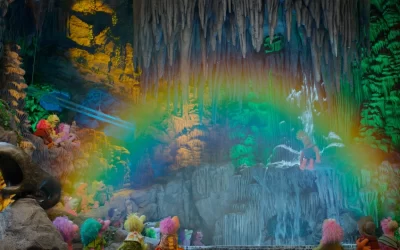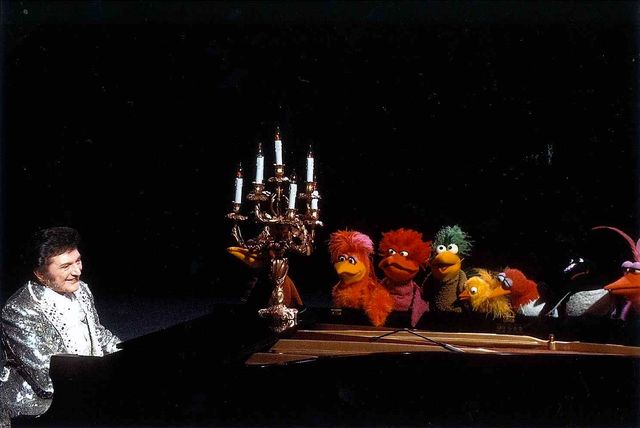 Original air date: October 19, 1978
Original air date: October 19, 1978
This episode of The Muppet Show is different from the rest of the series in a striking way. There’s a significant format break: the entire first half of the show features typical Muppet musical numbers and sketches that we have come to expect from our felted friends and our special guest star Liberace only makes a few brief appearances to string the plot of the episode along.
In the second half, we are treated to a mini-Liberace concert, where he performs four whole numbers, three at the piano and one where he’s singing and dancing. This is absolutely the right move for Henson and Co. to make when they’re adjusting their show to the needs of “Mister Showmanship” himself. Liberace has such a singular and unique performance personality and a particularly glammy aesthetic, and he would have gotten in the way of a lot of typical Muppet antics. Instead, some absolutely beautiful Henson artistry is utilized to enhance Liberace’s world-class piano playing and showmanship. It results in one of the strongest episodes of the series.
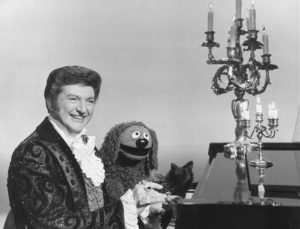 If you aren’t familiar with the glitzy-ringed wonder that is Liberace, let me take you on a crash course. Born W?adziu Valentino Liberace in 1919 (which would have made him 58 when he taped this episode), Liberace was known primarily as a pianist but was also an overall world-class entertainer. He got his start as a child piano-prodigy, so he already had around 40 years of performing experience by the time he got to The Muppet Show.
If you aren’t familiar with the glitzy-ringed wonder that is Liberace, let me take you on a crash course. Born W?adziu Valentino Liberace in 1919 (which would have made him 58 when he taped this episode), Liberace was known primarily as a pianist but was also an overall world-class entertainer. He got his start as a child piano-prodigy, so he already had around 40 years of performing experience by the time he got to The Muppet Show.
Late 70’s Liberace was at the top of his game: at the time he was the highest paid musician in the world and was known to be basically the most incredible dresser ever. When audiences went to see a Liberace show, not only did they expect both beautiful piano music that straddled the line between classical and music-hall, they also demanded a lot of glitz and glamour, with Liberace sporting his trademark rings and rhinestone tuxedo, surrounded by enough candelabras to burn down whatever town he was currently playing in to the ground.
Liberace’s legacy is complex. His offstage persona was narcissistic and nasty, as portrayed in one of my favorite movies from the last ten years, director Steven Soderbergh’s Behind the Candelabra. However, in his episode of The Muppet Show, he works wonderfully with the Muppets and appears to be at ease showing off his rings, rocking out on the piano and dancing with a flock of Muppet birds.
Liberace’s mini-show is pretty mesmerizing. He starts by playing “Chopsticks,” a basic piece that any child can play, but he makes it increasingly complex until he launches into a section of composer Franz Liszt’s “Hungarian Rhapsody No 2,” which a lot of Muppet fans at the time would have known from countless Warner Brothers cartoons. We then are treated to a mesmerizing cover of Erroll Garner’s jazz piece “Misty,” set on a beautiful foggy dock set, with stunning paper seagulls flying overhead.
Next up is Chopin’s Nocturne No. 5, with Liberace accompanied by the Muppet Show’s resident Bird Dancers. These members of London’s Royal Ballet wearing Muppet bird-heads are refreshingly different from other Muppet characters, and their use has never been as appropriate as it is here.
After a goofy interchange with Sam the Eagle lets us know that Liberace is going to get a low-culture, he does a quick-change through the magic of TV into a rhinestone tux. We then get treated to Liberace playing through some dance-hall boogie-woogie and into a variation of the old standard “Has Anybody Seen My Gal,” changed to “Has Anybody Seen My Bird.” Liberace gets up from the piano, with Rowlf filling in and does the Charleston with the rarely seen Fletcher Bird and accompanied by a chorus of other appropriately goofy Muppet birds. It’s very fun, and Liberace is a genuinely charming singer and dancer.
This concert section of the show quickly takes us through classical, jazz, boogie-woogie and ragtime and each number has a distinctly different feel. Watching it this time around, I was wondering if there was anything else like this on TV at the time, or even currently. There’s such a variety of music genres represented in this episode, and so many different puppetry styles as well. It really is The Muppet Show firing on all cylinders.
Liberace’s legacy is so complex. He was dogged by rumors of homosexuality for his entire career and died of complications related to AIDS in 1987. Liberace never came out of the closet, although many close to him confirmed that he was indeed gay after he died. To modern viewers of this episode, news of Liberace being a gay man might be as entirely unsurprising. However, forty years ago when this episode aired, Liberace’s sexuality was unconfirmed. Even Austin Powers was shocked to learn Liberace was gay in a great joke in his first movie!
It’s fascinating that Liberace dedicates his concert in this Muppet Show episode to “the birds.” Not only does this lead to a fun gag with Gonzo in which he wants to audition his chickens for Liberace, but it also got me thinking. Liberace seems so happy and comfortable on The Muppet Show dressed in ostentatious clothing and palling around with the ragtag Muppets. For a lot of kids watching at the time, this was their first exposure to any type of queerness in any media.
Birds are beautiful, aloof, they fly through the air, barely touching the ground. The Muppet birds are all a little odd, maybe even slightly out of place with the rest of the regulars on The Muppet Show. Gonzo definitely is, and he makes a reference in this episode that maybe he could be a bird! Perhaps when Liberace dedicated his performance to the birds, he meant those kids whose families described them as “odd ducks” sitting at home, waiting to fly, watching Liberace through a flickering TV: the kids who really needed to see someone like him laughing and fooling around with the Muppets.
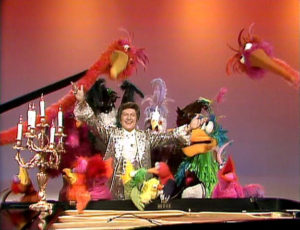
Best Joke: In his segment, the Swedish Chef somehow has a coffee percolator growing out of his head, and then Veterinarians Hospital comes in to try to get it off in the kind of crossover sketch that Muppet geeks love!
Lamest Joke: Liberace stops his show to tell the audience that all his rings are real. Yeah, you’re a super well-paid musician. WE GET IT, LEE!
MVM (Most Valuable Muppet): Do we think that Fletcher Bird has ever gotten on this list before or ever will again? Because he’s definitely the Muppet star of this one, doing a wild dance number with Liberace, and keeping up too!
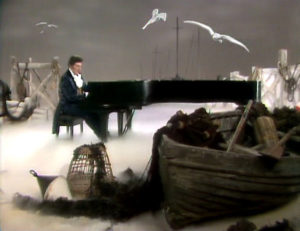
Most Classic Moment: The Muppet Show doesn’t get any more beautiful than Liberace playing jazz on a foggy dock set with lovely paper-like seagull Muppets flying overhead.
Should Be Classic Moment: The first half of this episode is eclipsed by the second, but it features a hilarious musical number. Miss Piggy and a group of pigs on a coastal Greek set perform the classic “Never on a Sunday.” The best moment comes when one of the pigs starts shouting random Greek and Mediterranean words like “Zorba! Mykonos! Hummus!” to hilarious effect. Also, this is just another musical genre represented in this episode, which genuinely travels musically around the world.
Click here to play “Chopsticks” on the ToughPigs forum!
by Louie Pearlman

